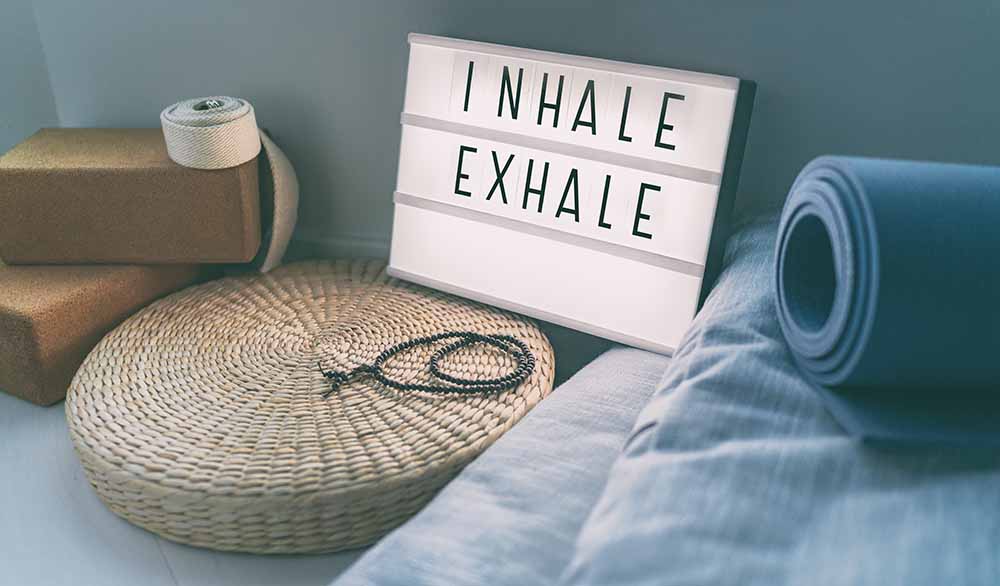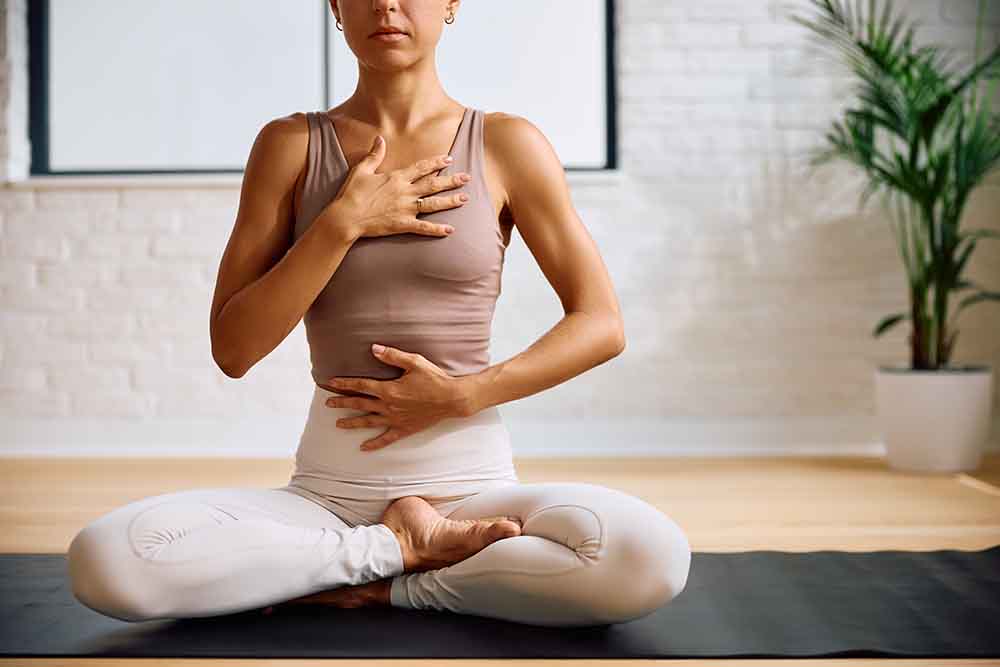There are numerous things that can keep you up at night, such as jet lag, work or school-related stress, or concerns about money, relationships, or family. Insomnia may also affect you during the day, the causes of which can be:
• Irritability
• Fatigue
• Issues in focusing
• Low energy
• Subpar work output
Heart disease, depression, diabetes, asthma, and other conditions are more common in those who sleep for lesser than seven hours a night.

According to some studies, focusing on your breathing might reduce anxiety and even improve your quality of sleep. Your body and mind can benefit from deep, slow breathing in a number of ways, including:
• Reduced tension
• Increased synthesis of melatonin. Insomnia sufferers frequently have reduced levels of this hormone that promotes sleep.
• Reduced symptoms of asthma
• Calmer nervous system
Breathing Techniques For Sleep

4-7-8 Breathing
The 4-7-8 breathing technique can be practiced as follows:
• Part your lips slightly.
• Make a breathy whoosh sound as you release your entire breath.
• For four seconds, inhale silently via your nose while pressing your lips together.
• Hold your breath for seven seconds.
• For eight seconds, exhale once more while whooshing.
• Start by repeating four times and work your way up to eight repetitions.
This method was created as a variant of pranayama, an age-old yoga technique that promotes relaxation while recharging the body's oxygen supply.
Bhramari Breathing Exercises And Pranayama
You can do the Bhramari pranayama breathing exercise by following these steps:
• Shut your eyes and take deep breaths.
• Put your hands over your ears.
• Position the remaining fingers over your eyes and the index finger over your eyebrows.
• Next, concentrate on your brow area while applying light pressure to the sides of your nose.
• Keep your mouth closed and make the humming ‘Om’ sound as you exhale slowly through your nose.
• Repeat it five times.
According to a 2017 assessment of the literature, Bhramari pranayama can rapidly lower heart rate and respiration. This has a relaxing effect and can help your body get ready for sleep.
Three-Part Breathing Technique
• Inhale deeply and for a long time.
• Deeply breathe out and pay close attention to your body's sensations.
• Slow down your exhalation until it's twice as long as your inhalation after a few repetitions.

Exercise For Diaphragmatic Breathing
• Sit on a chair or bend your knees over a pillow while lying on your back.
• Lay one hand flat on your tummy and the other against your chest.
• Take deep and slow breaths through your nose while maintaining a steady hand on your chest and allowing your stomach hand to rise and fall in sync with your breaths.
• Breathe slowly through pursed lips after that.
• You want to eventually be able to inhale and exhale without your chest moving.
• By strengthening your diaphragm, this approach pauses your breathing and lowers your oxygen requirements.

Different Exercises For Nasal Breathing
The steps for the alternate nostril breathing exercise, also known as Nadi shodhana pranayama, are as follows:
• Cross your legs when you sit.
• Put your right thumb against your nose and your left hand on your knee.
• After completely exhaling, shut your right nostril.
• Breathe in using your left nostril.
• Shut your left nostril and exhale through your right nostril.
• Finish by exhaling through your left nostril after five minutes of this rotation.
According to a 2013 study, those who used nasal breathing techniques reported feeling less anxious afterwards.
Buteyko's Respiration
You can control your breathing by using Buteyko breathing, which is named after the doctor who developed the method.
To use Buteyko breathing techniques while you sleep:
• For around 30 seconds, sit in bed with your mouth slightly closed (not pursed) and breathe naturally through your nose.
• Take a slightly more deliberate breath in and out through your nose.
• Using your thumb and forefinger, gently clamp your nose shut while keeping your mouth closed until you feel the need to breathe again.
• Breathe deeply in and out through your nose once more while keeping your mouth closed.
Box Breathing
You should pay close attention to the oxygen you take in and exhale when box breathing:
• As you exhale, attempt to force all the air out of your lungs. Sit with your back straight.
• With each count, fill your lungs with more air as you take a slow, nasal breath and mentally count to four.
• Hold your breath while mentally counting to four again.
• Focus on removing as much oxygen as possible from your lungs as you slowly exhale through your mouth.
• During meditation, box breathing is a popular technique. Finding mental focus and relaxing are only two of the many well-established health advantages of meditation.